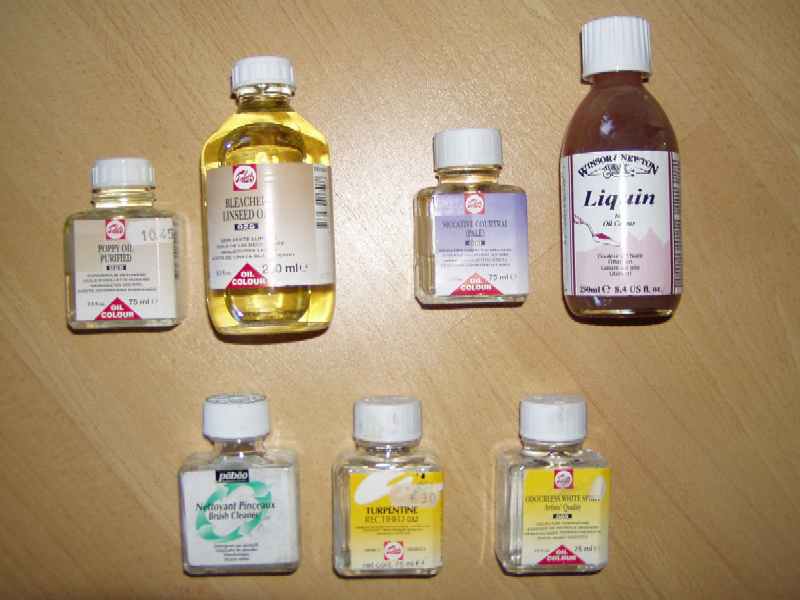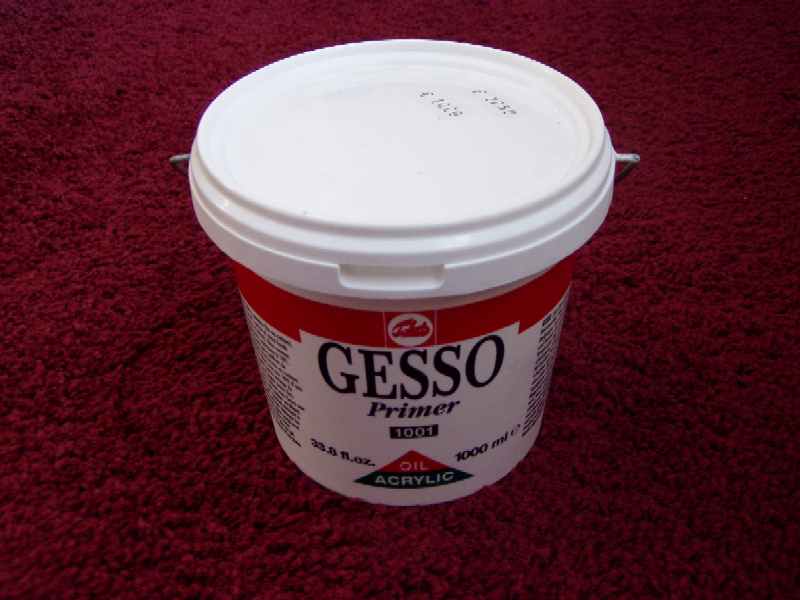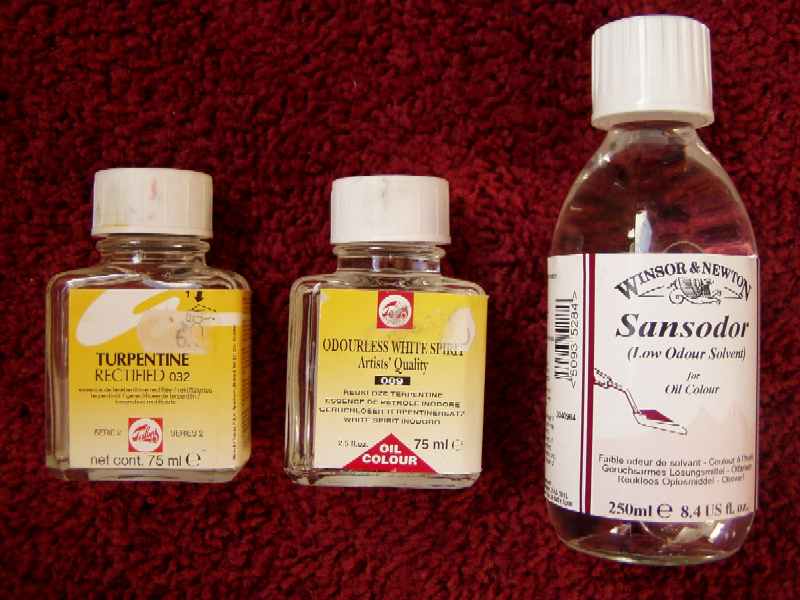1. Primers
Primers are substances that provide a good adhesive surface. They also reduce the absorption of the paint or oil into the support, ultimately resulting in a better outcome. There are also primers that can create relief surfaces.
Some primers include:
- Gesso; for flat surfaces, can also be mixed with color. Gesso is available from various brands.
- Underpainting white; for relief surfaces (Talens)
Many supports are already prepared. There are canvases in various sizes from many different brands that are already primed, so you can use them straight away. There is also specially prepared oil painting paper, and canvas boards that do not need to be primed.
|
2. Solvents
Solvents thin the consistency of the paint. They make it "lean." This means that by adding solvents, relatively less oil is present in the paint. In glazing techniques, you work fat over lean. Therefore, you start with a layer to which some solvent may be added. Solvents are also used to clean brushes and palettes after painting. The most well-known solvents are:
- Turpentine; This is the strongest solvent for artists, but also the most dangerous and pungent. At Talens, this is called "rectified turpentine" and at Winsor & Newton "English Distilled Turpentine."
- Mineral spirits; this is a mineral alcohol and therefore not the same as turpentine. Mineral spirits are watery and evaporate quickly. They are slightly less dangerous than turpentine. Odorless mineral spirits are also available from Talens. This product is otherwise comparable to regular mineral spirits from Talens. Mineral spirits are also known as "White spirit."
- Sansodor; This is a viscous and slow-evaporating substance. Sansodor is less dangerous than turpentine and mineral spirits. Additionally, it is odorless. Its use is similar to turpentine. You can use it to make the oil leaner or thinner. Sansodor is produced by Winsor & Newton.
|
3. Mediums
You can create painting mediums yourself by combining oil and solvent. Nowadays, there are also many ready-made mediums on the market. These generally have specific properties and cannot be easily made by simply combining oils and solvents. Mediums can have different applications. Usually, they thin the oil paint and improve its flow; sometimes they immediately accelerate drying. There are also mediums that maintain the consistency of the paint but reduce color intensity. Finally, there is also a special medium for glazing techniques
|
An overview of Talens mediums:
To improve paint flow:
- Painting medium; for thinning oil paint
To improve paint flow and accelerate drying:te laten drogen:
- Fast-drying painting medium; for thinning oil paint and accelerating drying
- Alkyd medium; for thinning oil paint and accelerating drying
Special for glazing techniques:
- Glazing medium; for thinning oil paint, enhancing flow. Especially for glazing techniques.
- Venetian turpentine; for thinning oil paint, enhancing flow. A traditional medium for glazing techniques
To reduce color intensity:
- Painting paste; increases the amount of paint while maintaining consistency. It reduces color intensity.
|






